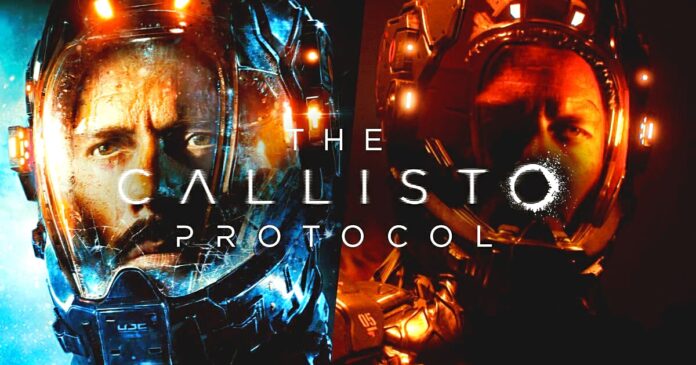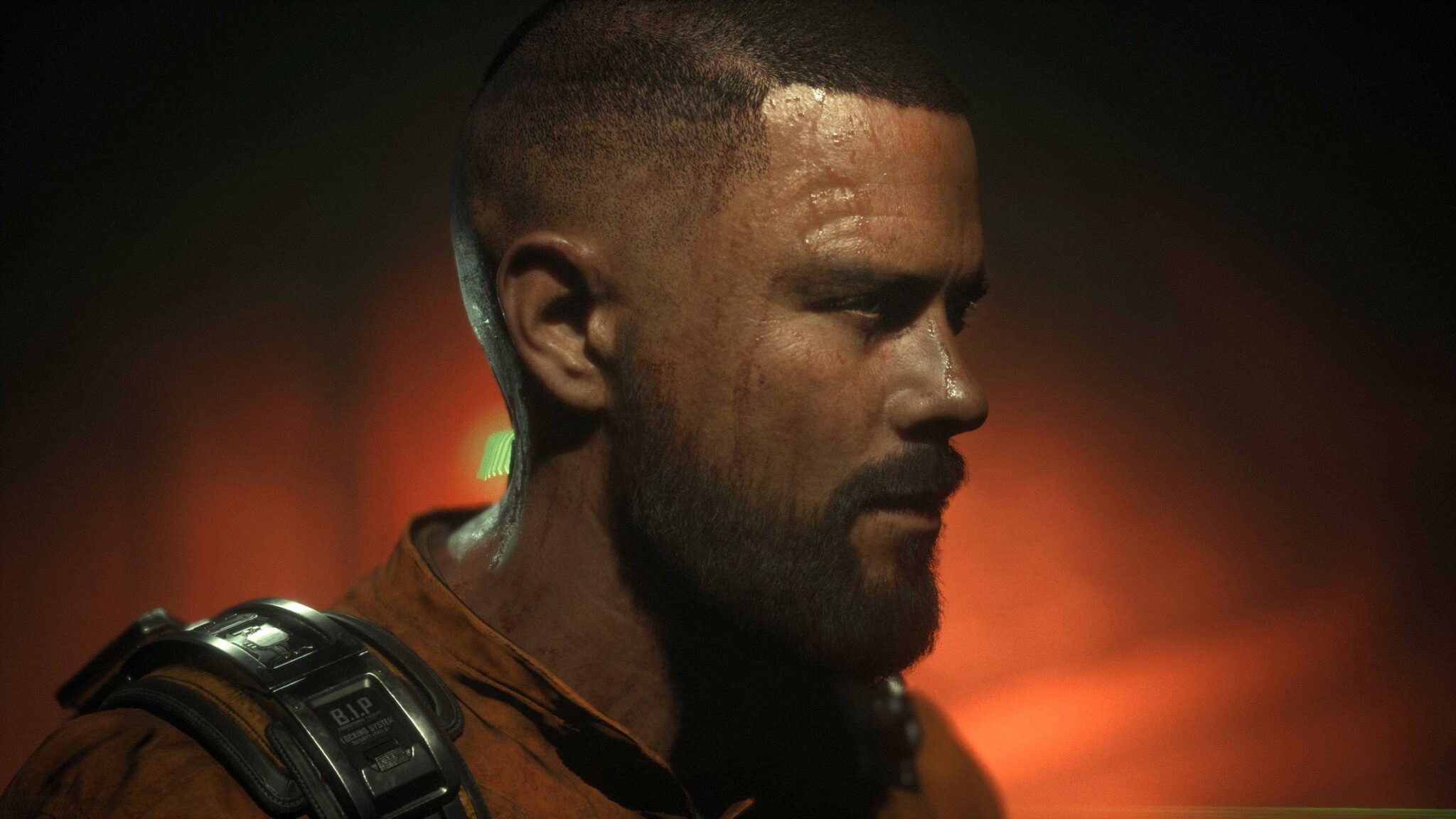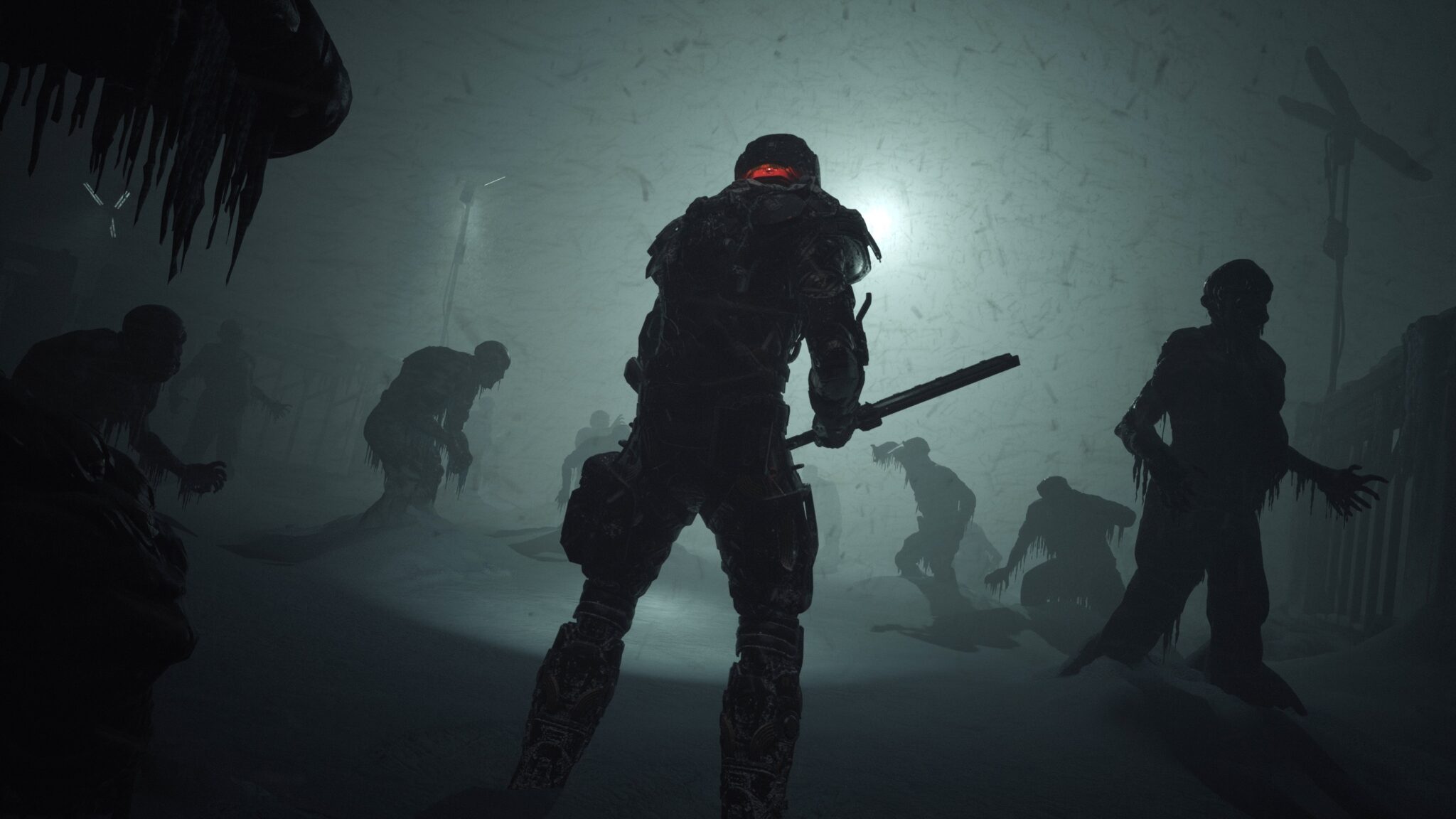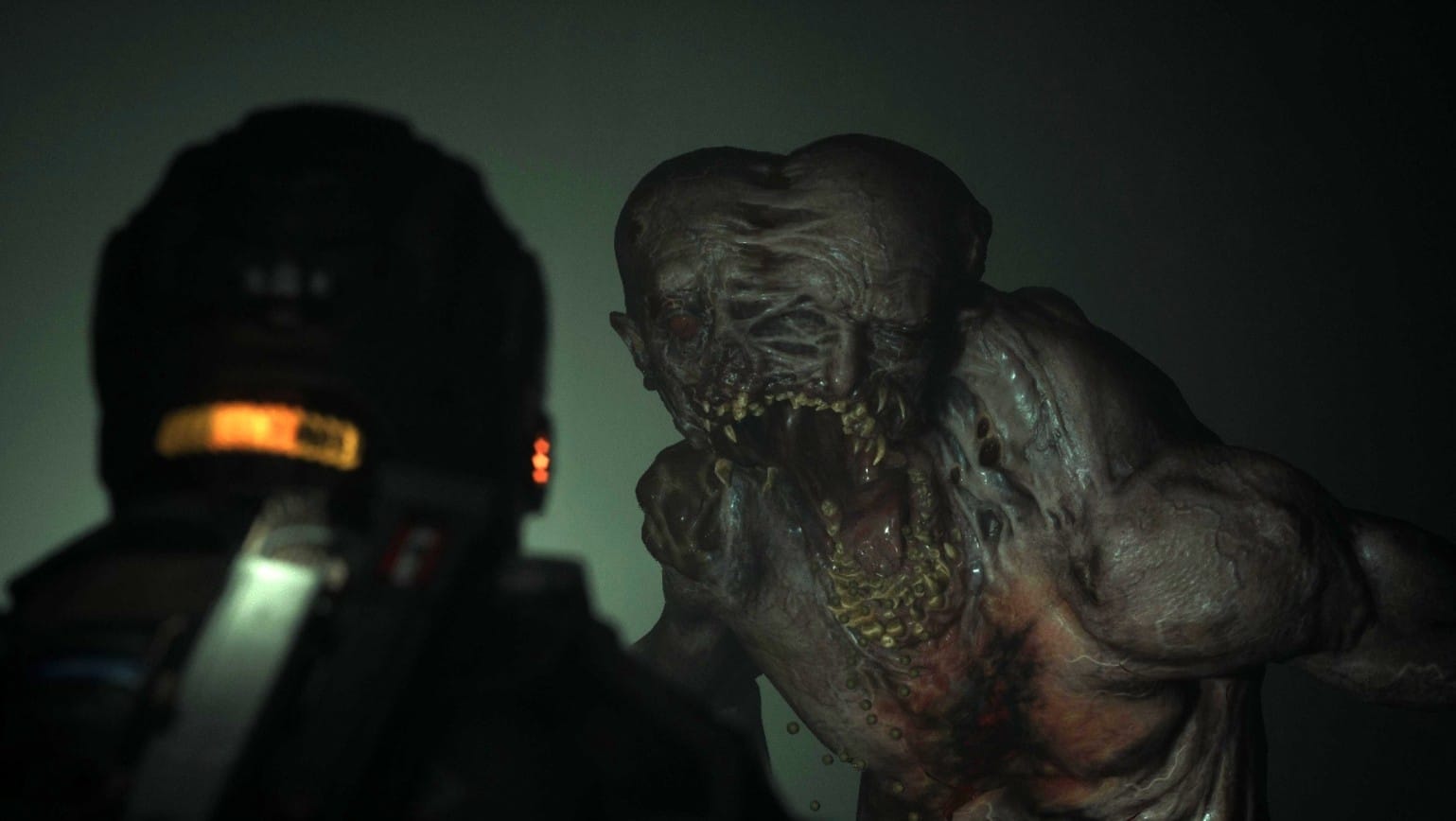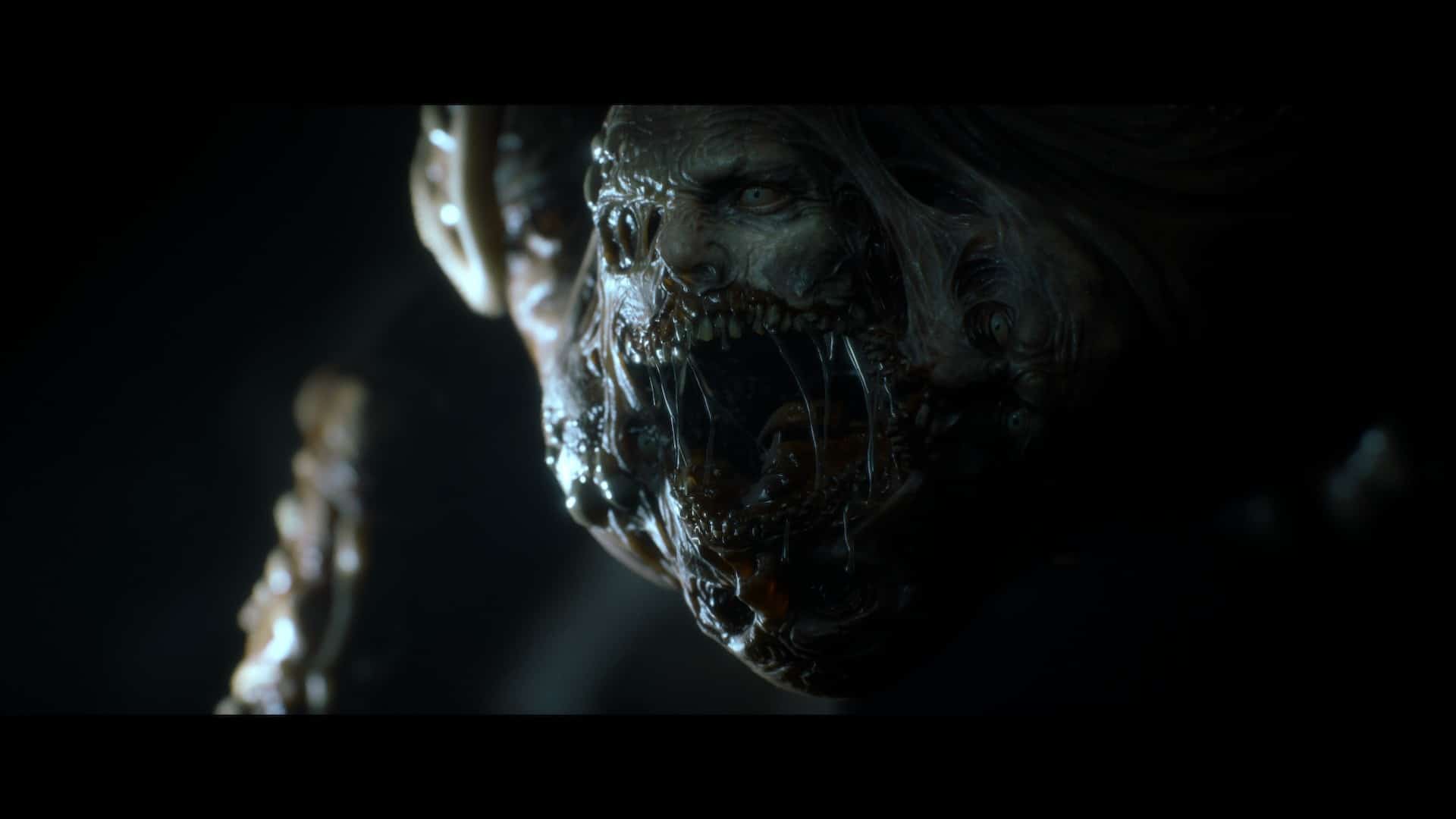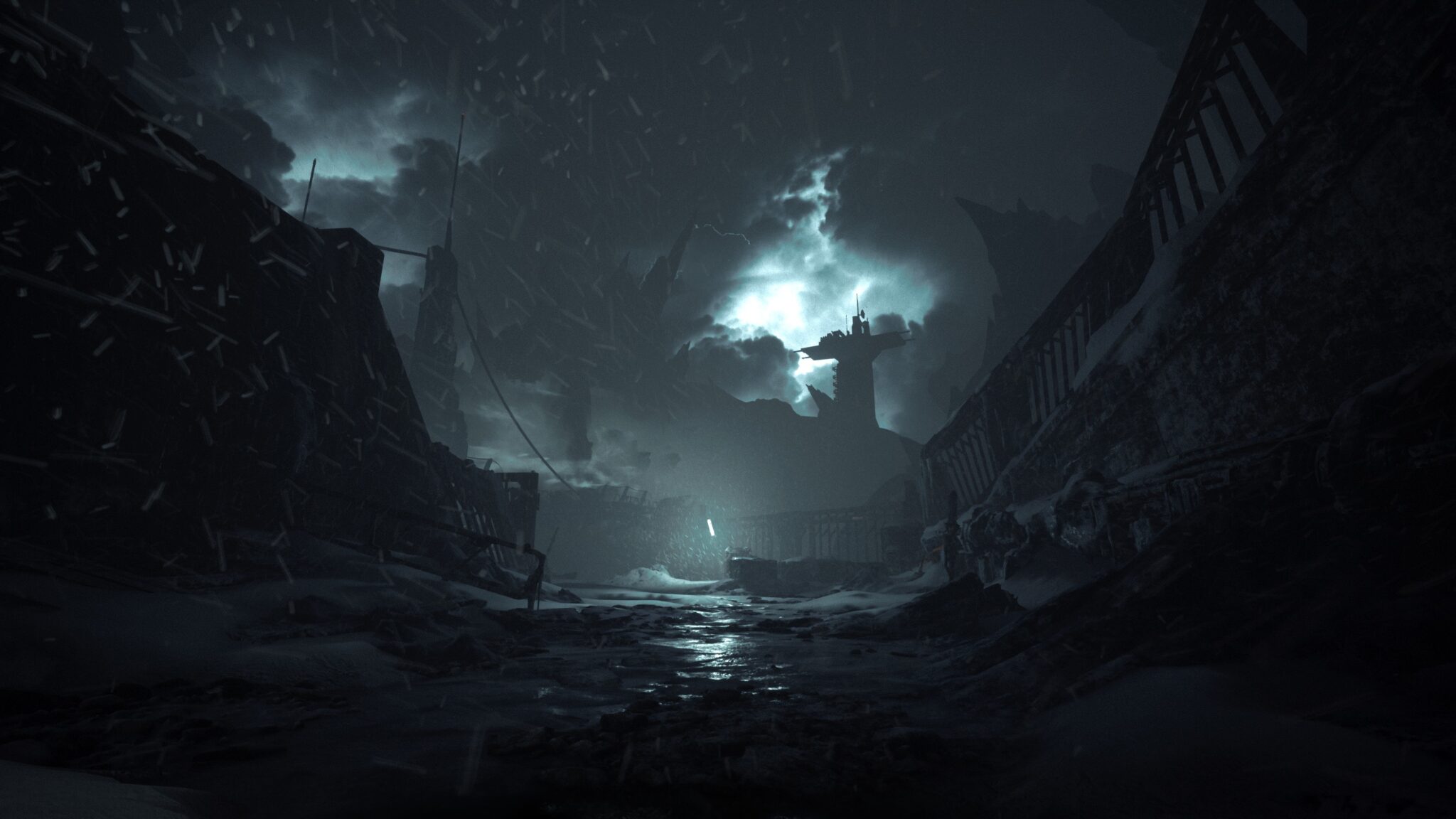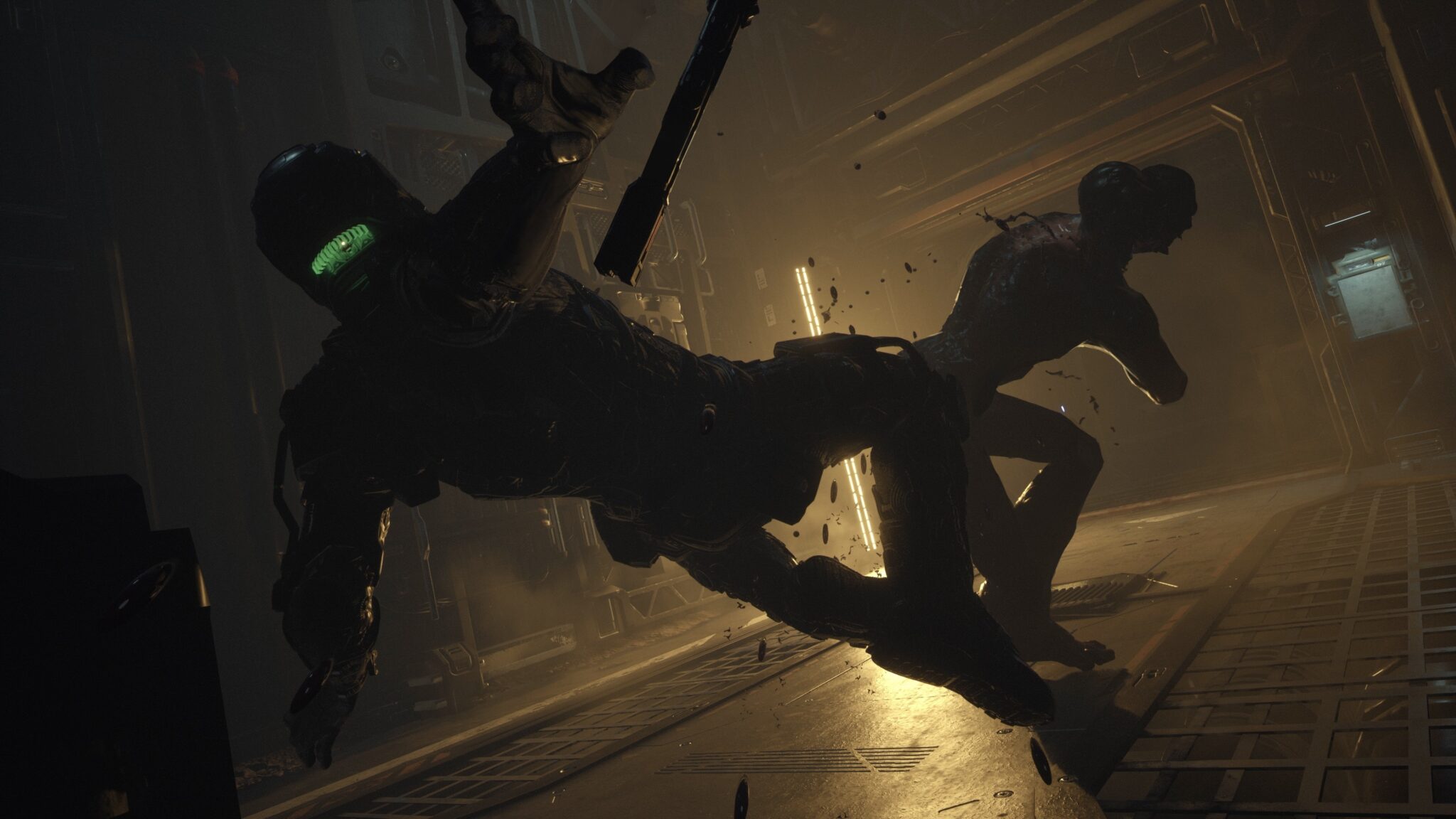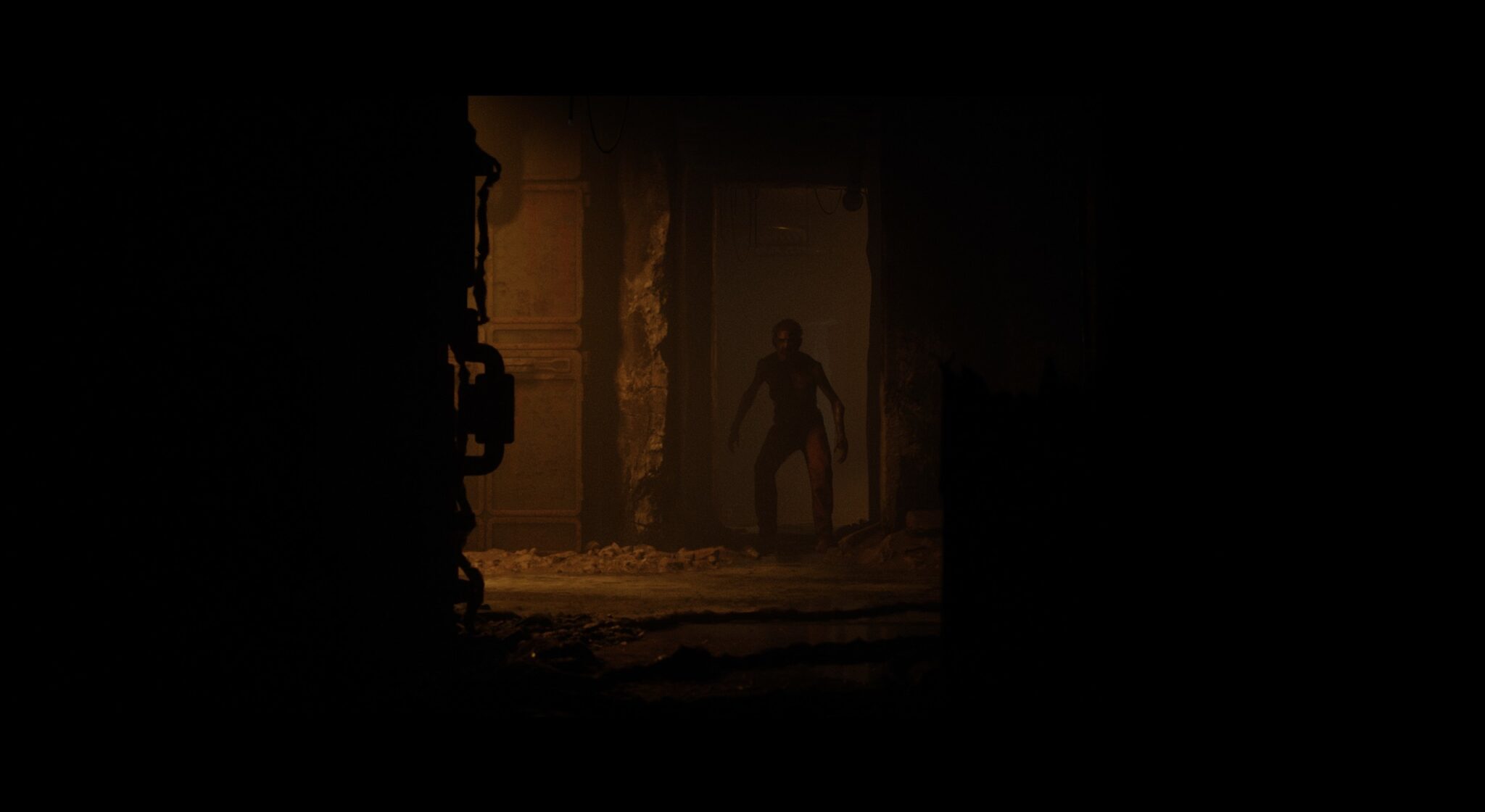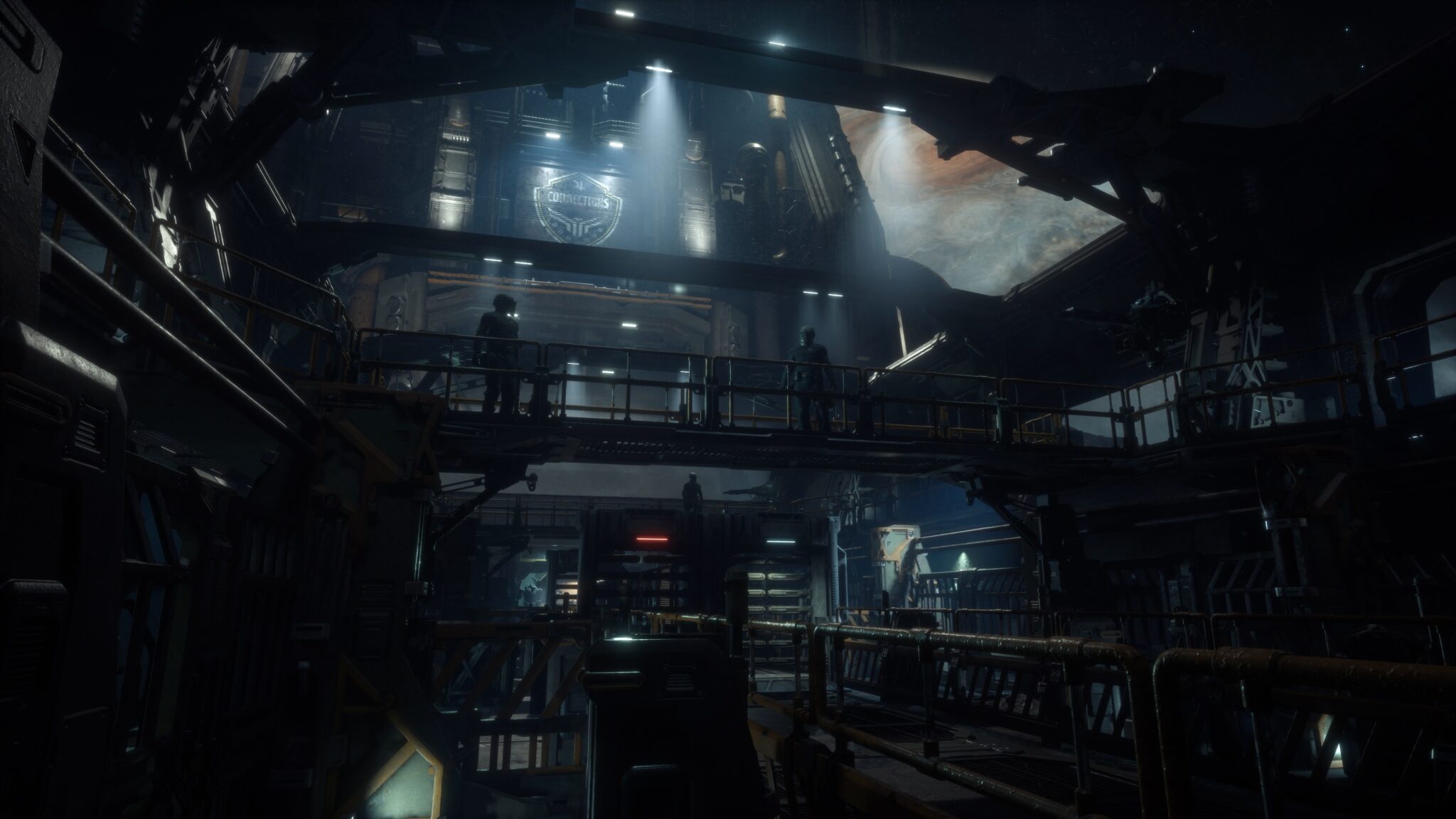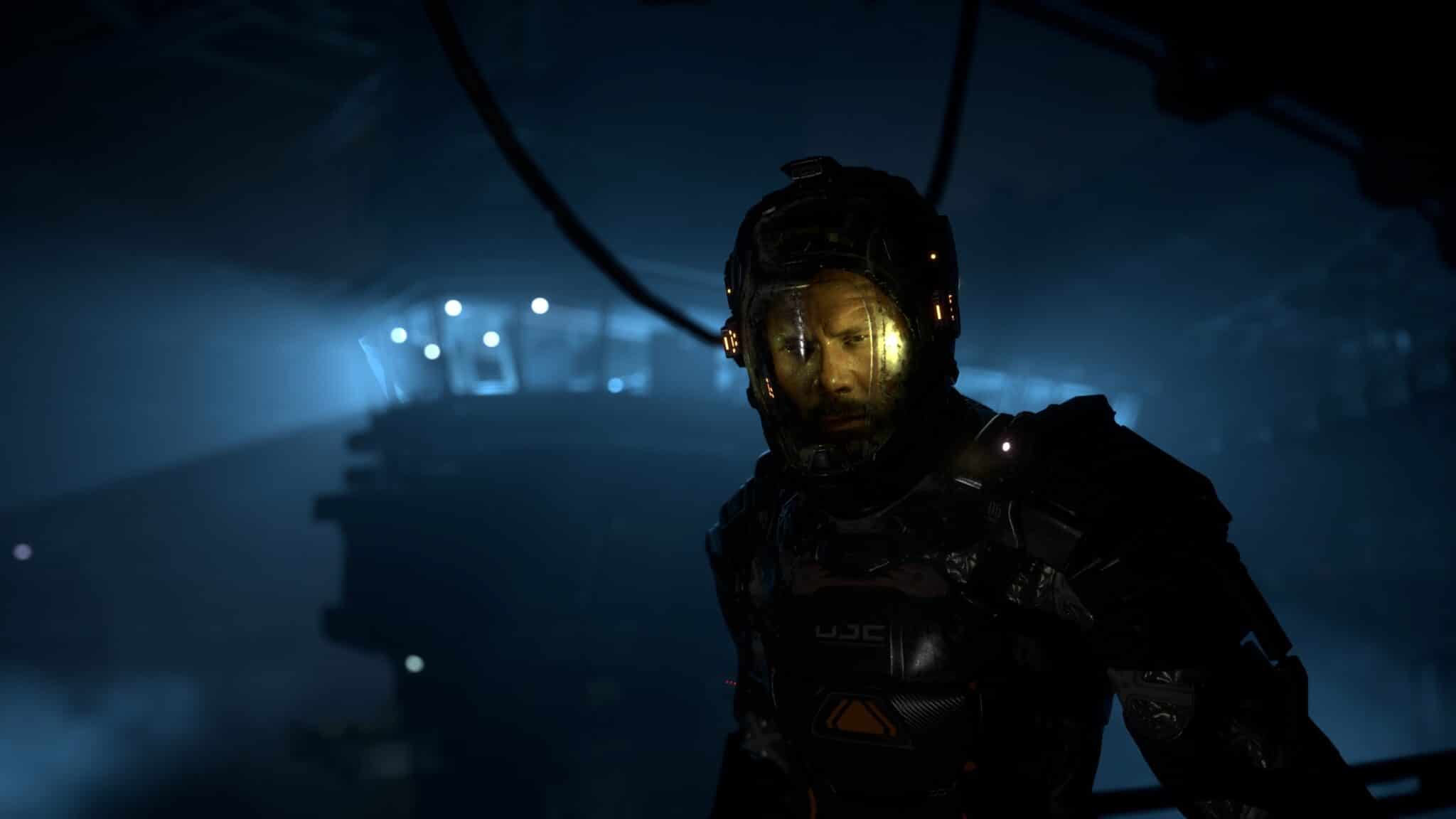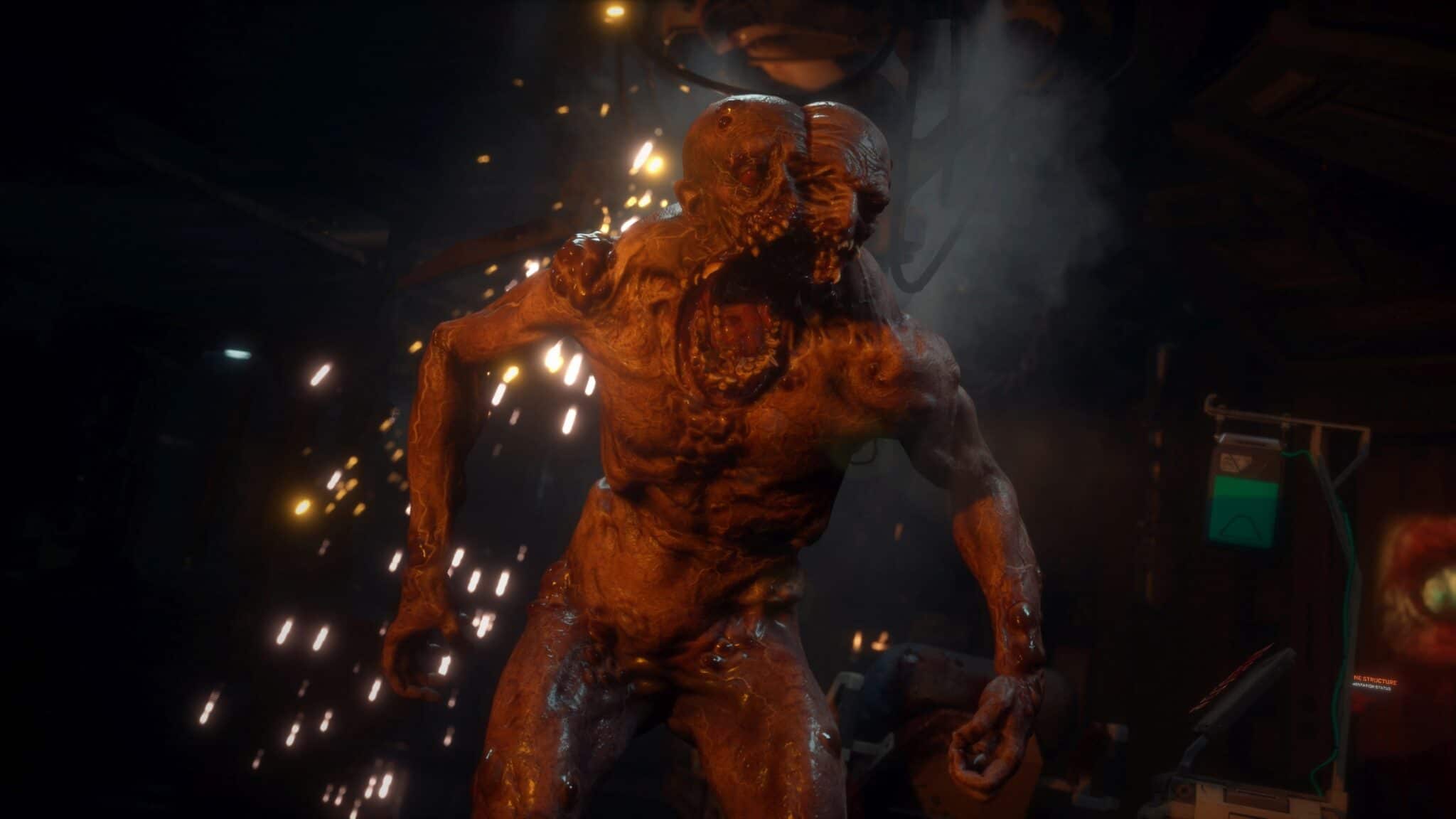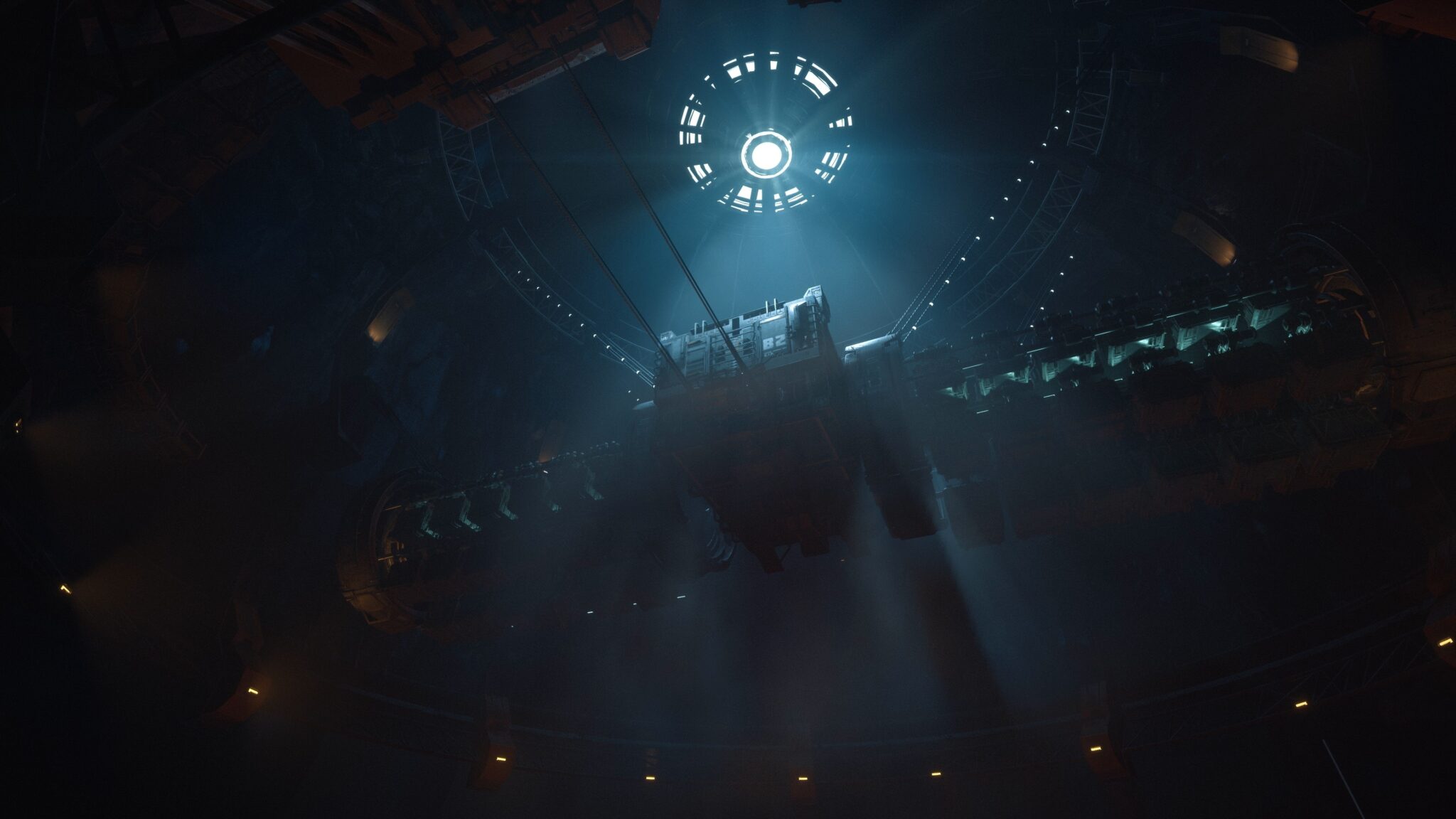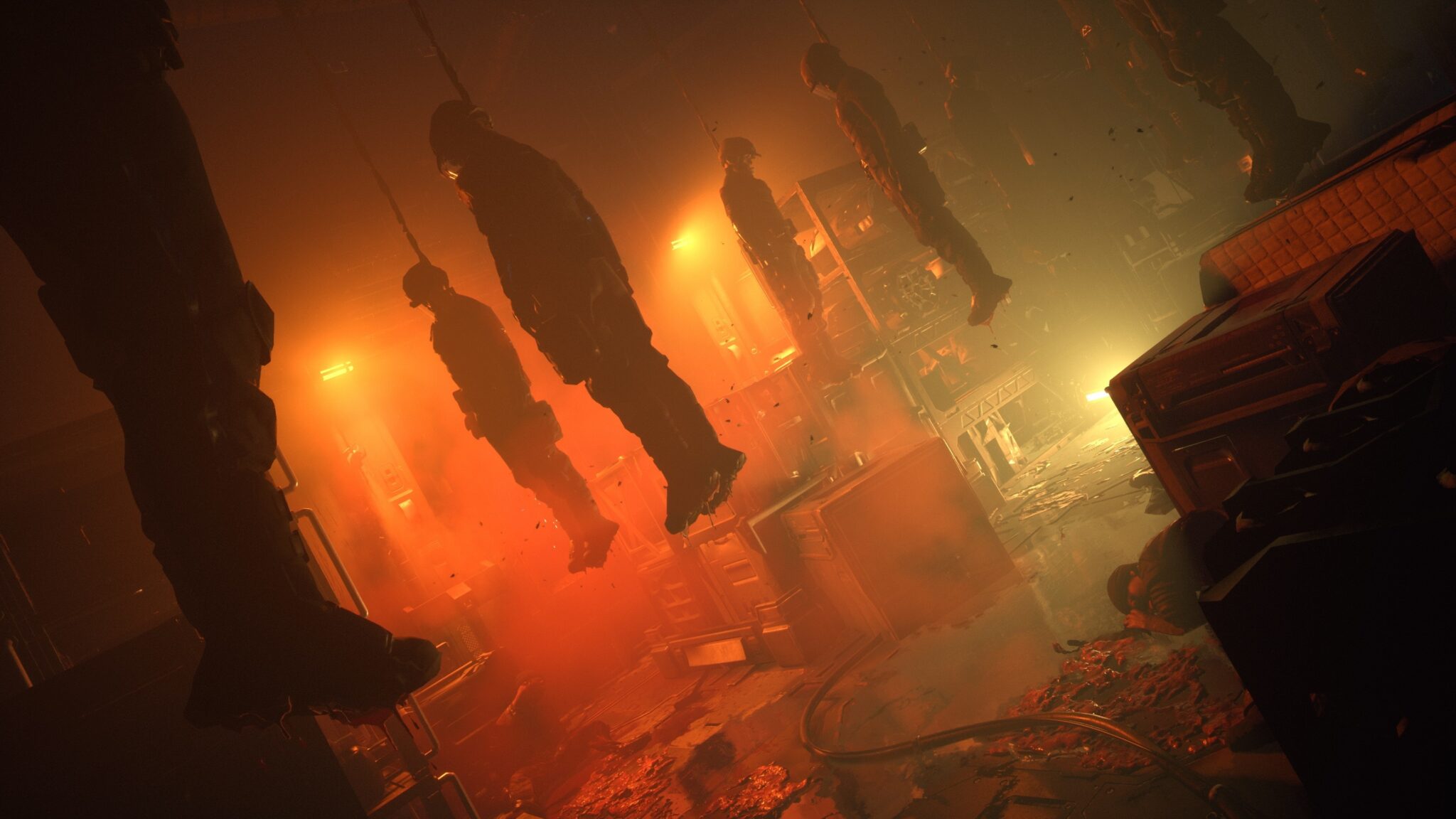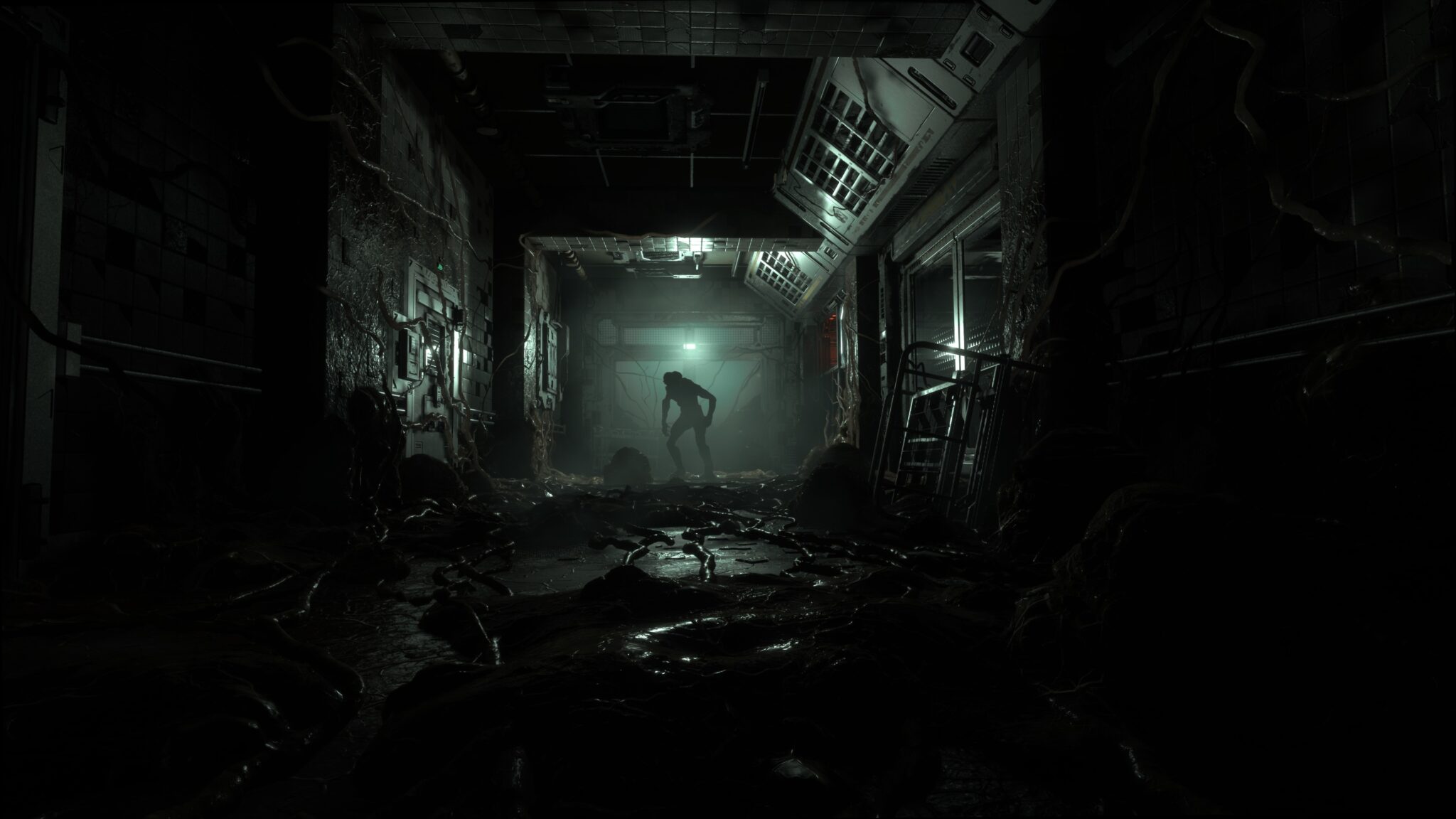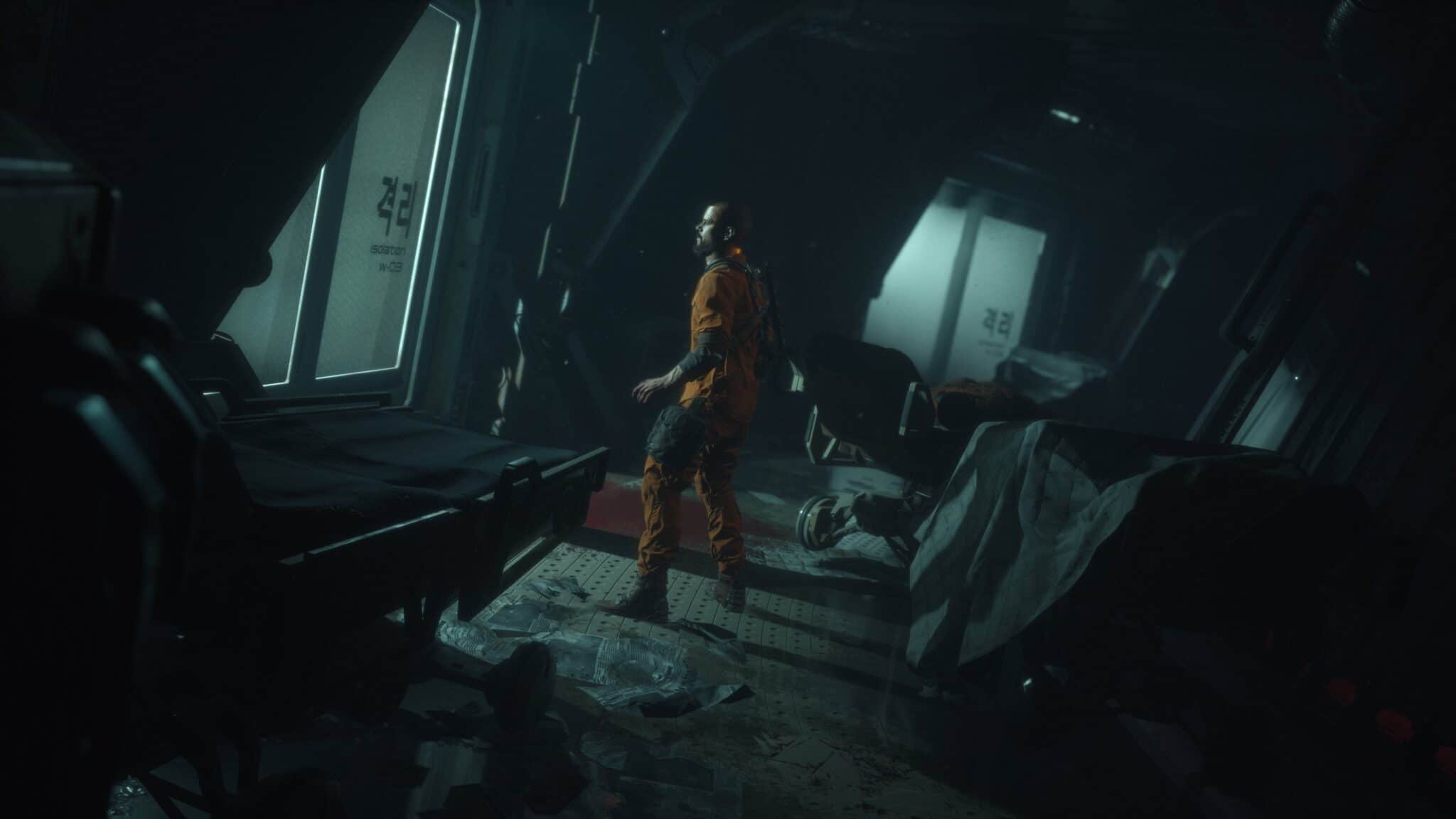The creator of Dead Space talks about his new horror action game and makes a surprising, slightly embarrassing admission in the process.
Blonde hair, radiant smile, perfect make-up: behind this artificial façade lies the horror. That’s right, it’s about Barbie – but also about hard-hitting action horror with sawn-off limbs. The two so-different forms of horror are inextricably linked – in the person of Glen Schofield, a driving force behind not one but two science fiction action games.
It’s true: both Dead Space and its quasi-sequel The Callisto Protocol, announced for 2 December 2022, would probably never have become reality without Barbie.
At the beginning of his career, Schofield first had to work on the forgotten Gameboy game Barbie Game Girl . But the trained graphic designer and later producer at EA Redwood Shores (later Visceral Games) did not let this hurt his pride – 30 years later he is working with his own studio on the return of space horror.
The Callisto Protocol is a merciless horror slasher in which you slaughter your way through a mutant-infested space prison from a third-person perspective. Dark corridors, eerie soundscapes, grotesque monsters and lots of blood characterise the first trailer of The Callisto Protocol. The parallels to Glen Schofield’s Barbie game are thus unmistakable:
But aside from all the jokes: How will The Callisto Protocol actually differ from Dead Space? What kind of weapons and (boss) enemies will we face in the game? And what has Glen Schofield learned about horror in games since he released the first Dead Space in 2008? We’ve compiled the answers to these questions (including a review of Barbie Game Girl) for you.
In prison the monsters are waiting
~: Summarise what The Callisto Protocol is all about. Who are we playing, where are we playing, why are we playing?
Glen Schofield: “The main character is Jacob Lee, and he’s a pirate or freighter pilot who transports goods to the colonies around Jupiter. I can’t get too detailed here, but it’s a story with depth, nuance and detail.
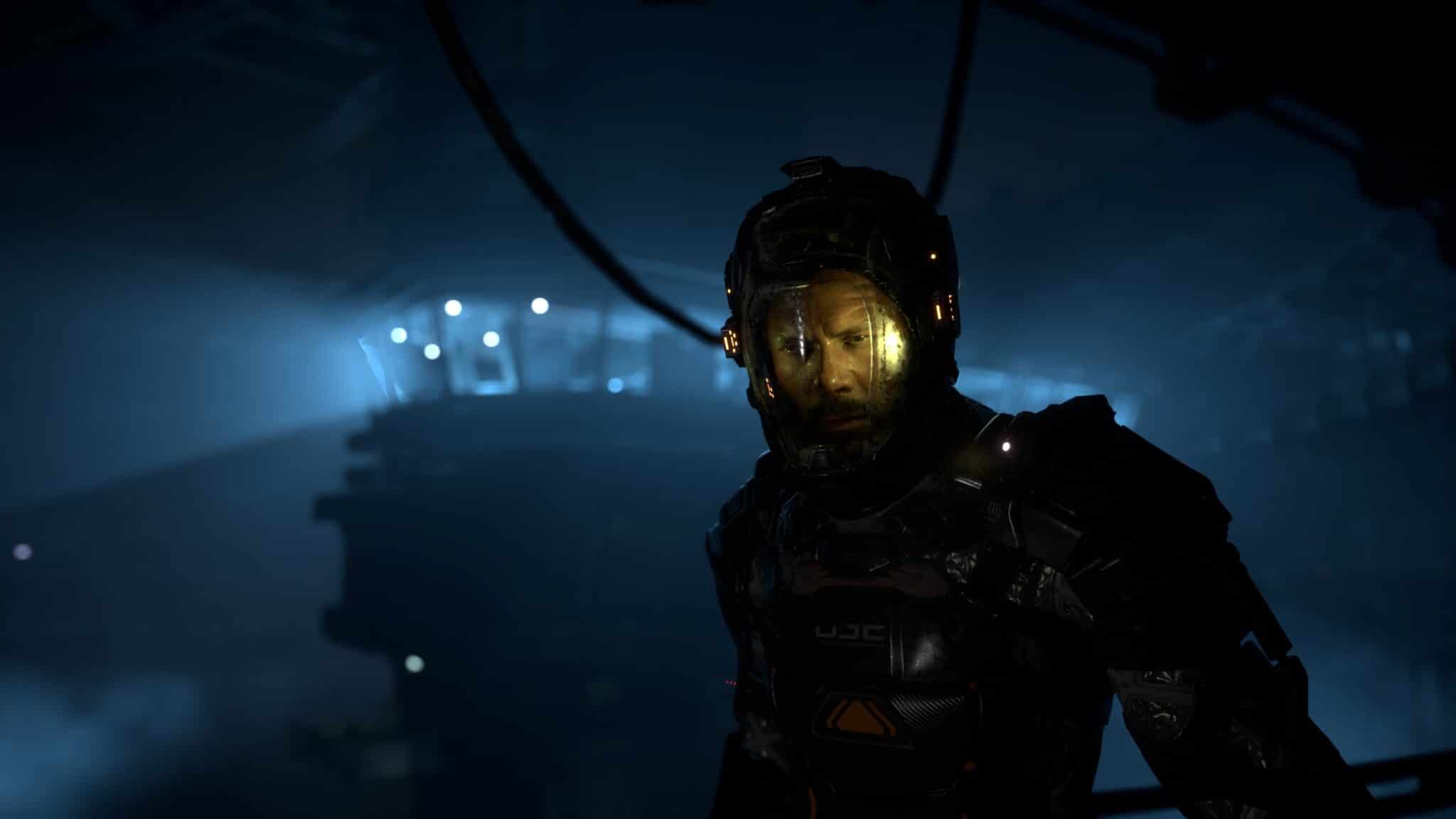
At first he just wants to get out of there, later it’s about naked survival, and then the story takes another turn towards the end, which I won’t go into here. The characters change as they discover new sides to themselves. It’s a horror story with extremely human aspects that makes you relate to Jacob – or so I hope.”
~: The Callisto Protocol was announced at the time as part of the PUBG universe. What was that all about?
Glen Schofield: “When I started here (at Krafton), they were tinkering with a giant timeline for PUBG. There was story, lore and all that, and there were big events being added. So we talked about putting Callisto Protocol into that timeline, a couple hundred years after PUBG. And it kind of fit because our game was … plausible.
It’s about a prison on a space colony whose scientists believe that humanity could eventually inhabit the planet because there’s water. But when it came to creating the story, the universe and the characters of Callisto Protocol, it struck us that we were actually moving away from all that. It was its own thing that was evolving differently, so I spoke to the management and they said just do your thing.”
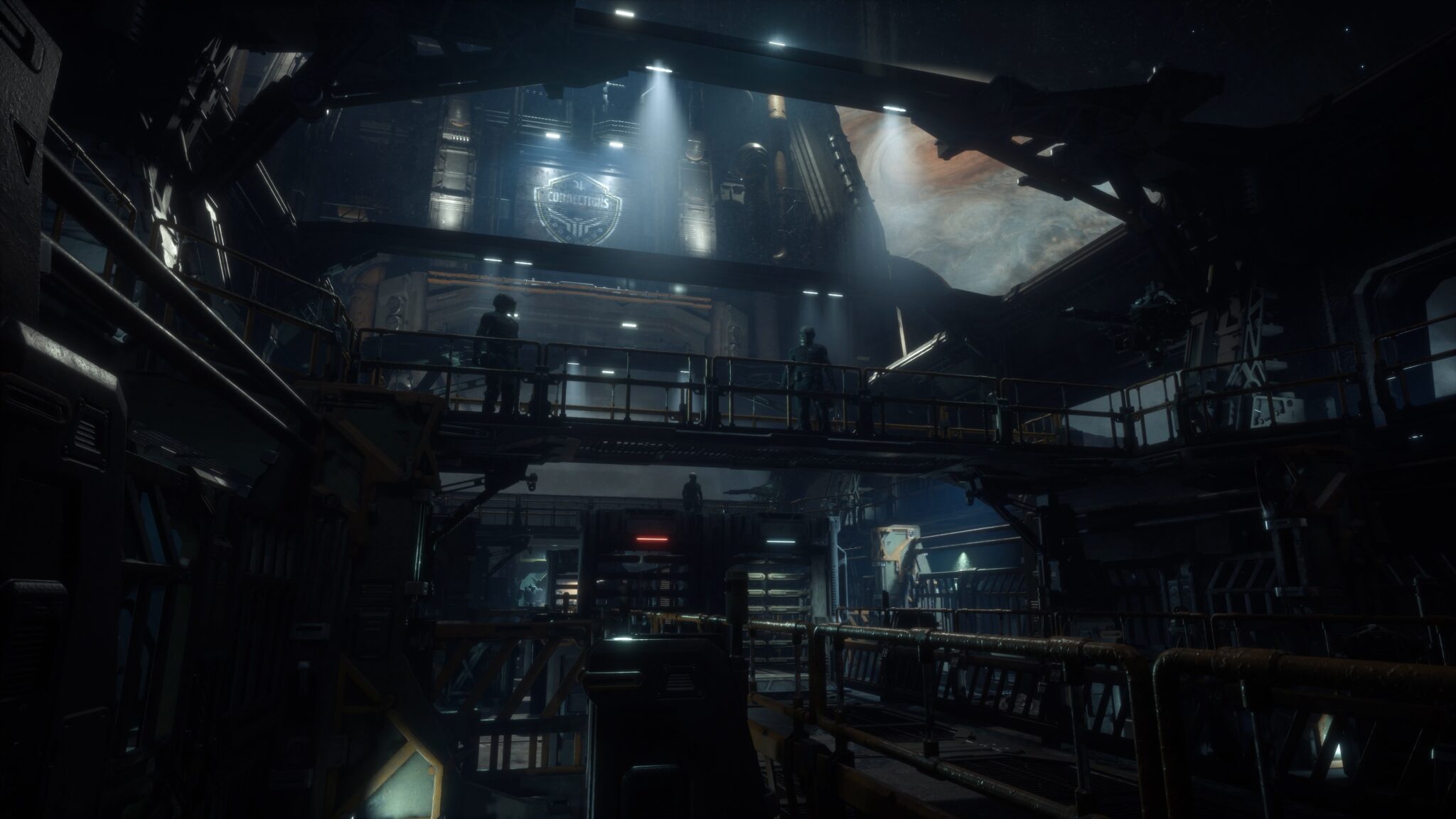
All you need to know about the battles
~: The Callisto Protocol is a shooter, so of course weapons are important. What can players expect?
Glen Schofield: “Jacob starts with a shiv (prison blade), then he gets an impact weapon, then a pistol and then something called a GRP (pronounced grip), a gravity gun. You have to learn how to use it properly. You can lift some types of enemies with it and it opens up new ways to get rid of enemies. You have to internalise all this because every enemy is different.
When combinations of enemy types come up, you have to switch back and forth between melee, firearms and grip to survive. So you should master the system, but besides, you can upgrade the weapons according to your personal taste.”
~: That almost sounds like the battles are a kind of strategic puzzle game.
Glen Schofield: “I wouldn’t call it a puzzle game, but there is a strategic element to fighting the enemies. You have to think carefully during the encounters and you will probably die a few times. On the third try, I think you’ll say to yourself, ‘I need to make a plan before I go back in there.’ And that’s what we want. Suspense, horror, fear of getting killed. That’s what it’s all about. ”
All you need to know about the fights
~: The Callisto Protocol is a shooter, so weapons are naturally important. What can players expect?
Glen Schofield: “Jacob starts with a shiv (prison blade), then he gets an impact weapon, then a pistol and then something called a GRP (pronounced grip), a gravity gun. You have to learn how to use it properly. You can lift some types of enemies with it and it opens up new ways to get rid of enemies. You have to internalise all this because every enemy is different.
When combinations of enemy types appear, you have to switch between melee, firearms and grip to survive. So you should master the system, but besides, you can upgrade the weapons according to your personal taste. ”
~: It almost sounds like the battles are some kind of strategic puzzle game.
Glen Schofield: “I wouldn’t call it a puzzle game, but there is definitely a strategic component to fighting the enemies. You have to think hard during the encounters and you’ll probably die a few times. On the third try, I think you’ll say to yourself, ‘I need to make a plan before I go back in there.’ And that’s what we want. Suspense, horror, fear of getting killed. That’s what it’s all about. ”
~: Is that reflected in the difficulty? Is the game accessible to all, or did you think it would be cool to go a little more in the direction of Dark Souls?
Glen Schofield: “We have multiple difficulty levels, obviously. I think the normal difficulty is going to be quite steep. So it’s not a doddle if you’re not playing on easy. In easy mode there will probably be special item drops if you keep dying in certain places.
We don’t want to see people dying all the time, and that’s what we look for in playtesting. If someone fails more than five times in one place, we say, ‘Okay, we probably need a few more drops here.’ Or else we take an opponent out. But we don’t want to dilute the game in the process, of course. ”
The Callisto Protocol’s arsenal of enemies
~: What kind of different enemies are there anyway?
Glen Schofield: “There are a few humanoid enemy types. Some are aggressive, some hide, others are quite large or spit something at the player. There are small enemies that crawl on the walls. In the trailer there was an enemy that bursts out of a cocoon and grabs the player by the neck … and quite honestly, when you first meet that one, you pee your pants in fear. You have no idea what’s going to happen. Then there’s a couple of mini-bosses and a big boss at the end.”
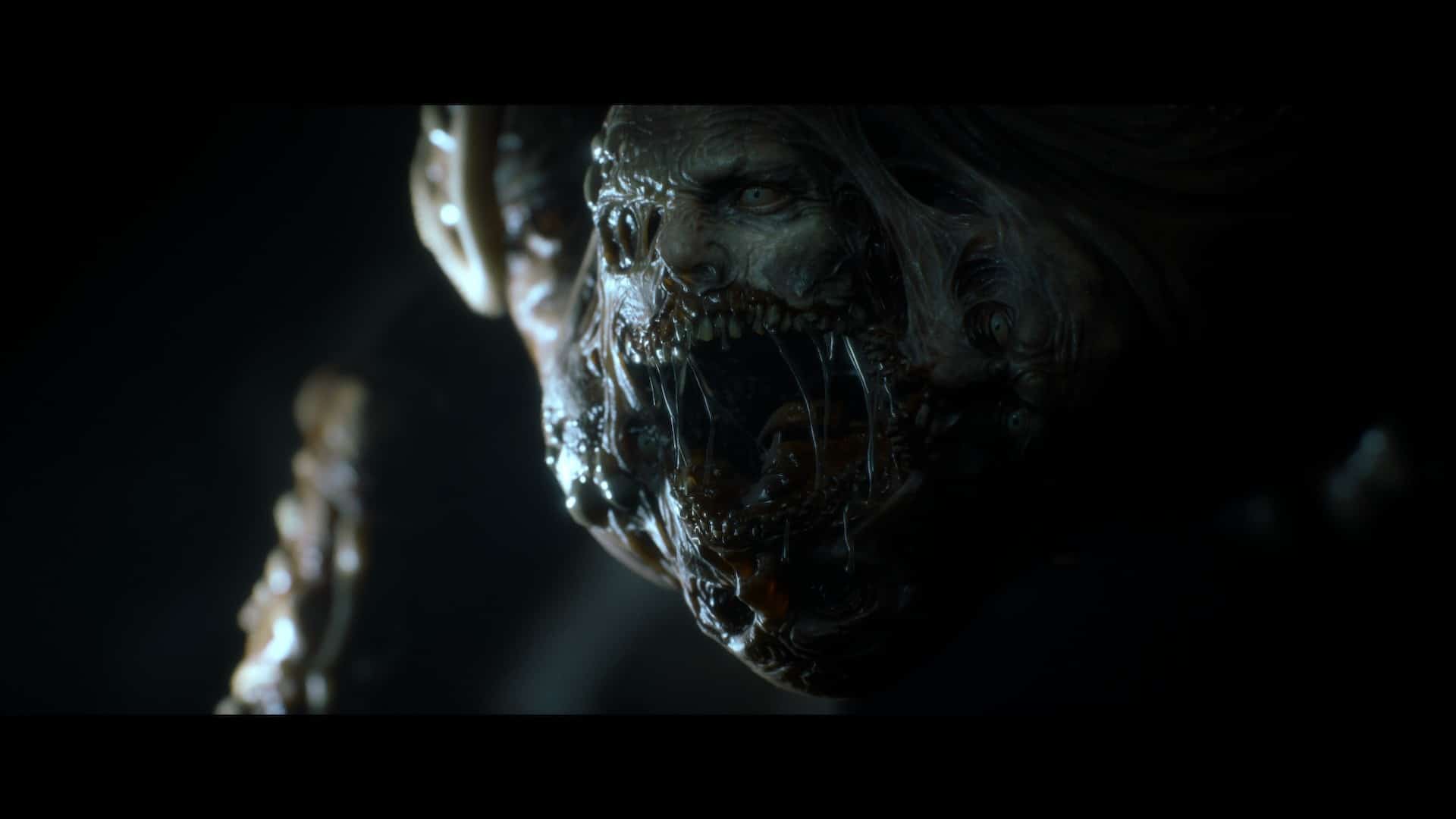
~: So mini-bosses that appear at the end of the level?
Glen Schofield: “Yeah, the first time you come across a certain enemy, it kind of completes a level and just feels like a mini-boss. It’s quite hard. If you get too close to it, it knocks you right off your feet. One hit, boom, dead. As I said, you learn. Later in the game, you meet a few more of this type, but quite normally in the level, not as boss opponents. Then there’s another mini-boss that appears once, no twice, and a gigantic final boss. ”
~: In the trailer there are hints of environmental kills, such as the big fan. Did I get that right?
Glen Schofield: “Yeah, right. If you get too close to that, you’re going to get smacked in it. We showed a really interesting kill of the main character also at Summer Game Fest. But there is also a clear difference between our Gravity Gun and others. You can lift the enemies up and shoot them into environmental traps. For example, there are spikes on the walls, huge fans or even exposed machine parts. There are some really kinky ways of dying with huge fountains of blood.
But always remember: Jacob is only trying to save the world. That’s how we’ll pitch the game to the USK. (laughs) We actually have a really good story. That also sets The Callisto Protocol apart from Dead Space: The main character didn’t talk. We also have some really detailed cutscenes, branching paths with lots of hidden secrets, and thanks to the skill trees, a lot of replay value as well, since you can’t possibly unlock or find everything on the first playthrough. It should be interesting to upgrade weapons differently the second time around.”
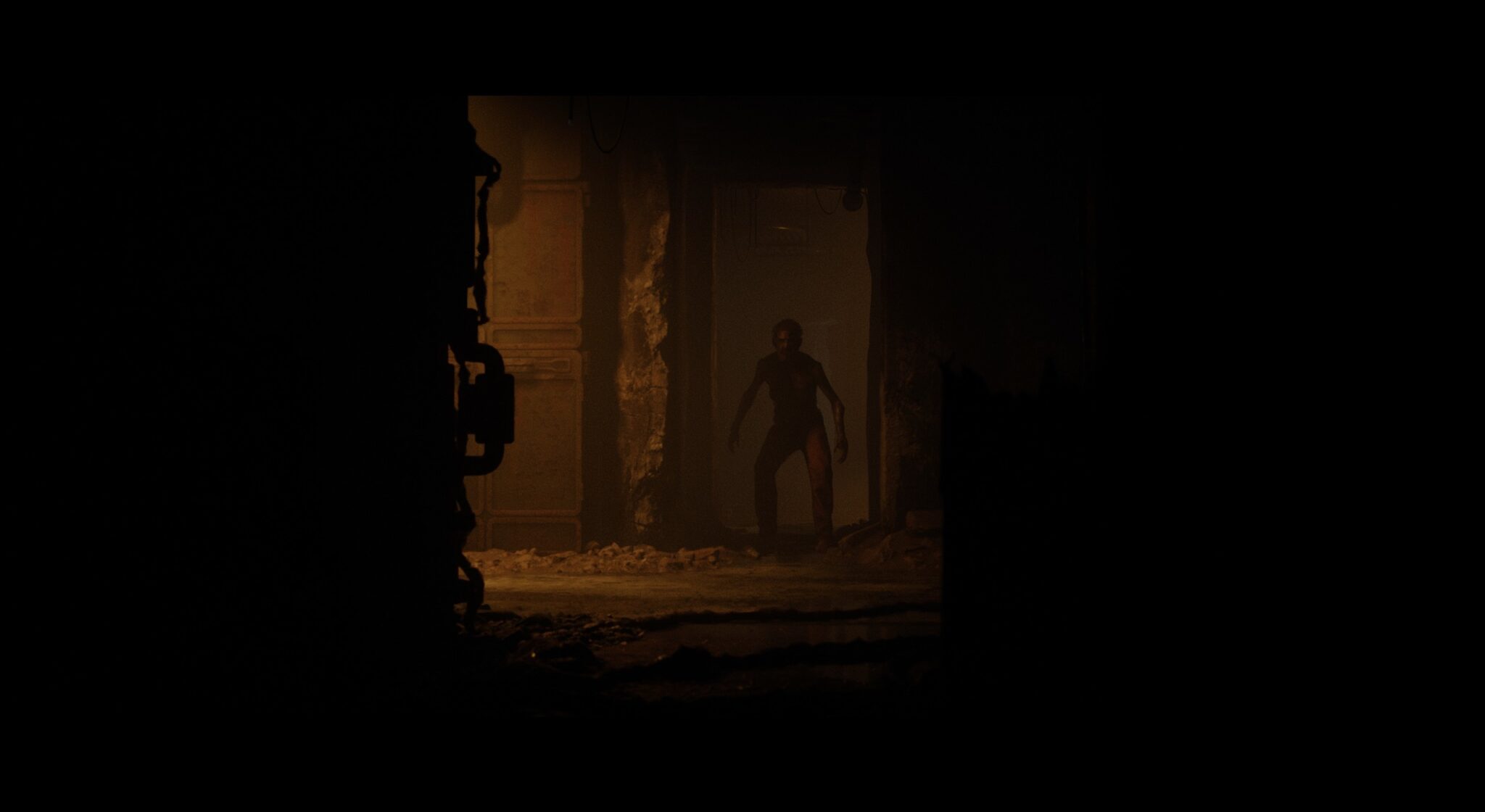
Differences and similarities to Dead Space
~: Is the Gravity Gun the gimmick equivalent of the dismemberment system from Dead Space?
Glen Schofield: “In a way, yes. But the comparison is a bit lame. Dead Space had strategic chopping, right. A lot of players went all Plasma Cutter on it. Sure, people tried the line cutter or the alternative fire modes … we also have alternative fire modes in Callisto, by the way … but our game is not just about cutting off the limb. You have to tackle each enemy differently.
For example, there is one type of opponent where the best approach is to attack them from behind with the Shiv. There are some variants of frontal combat, ranged combat, and then there is the GRP, which sort of combines the two. I think every player will approach the situations differently.”
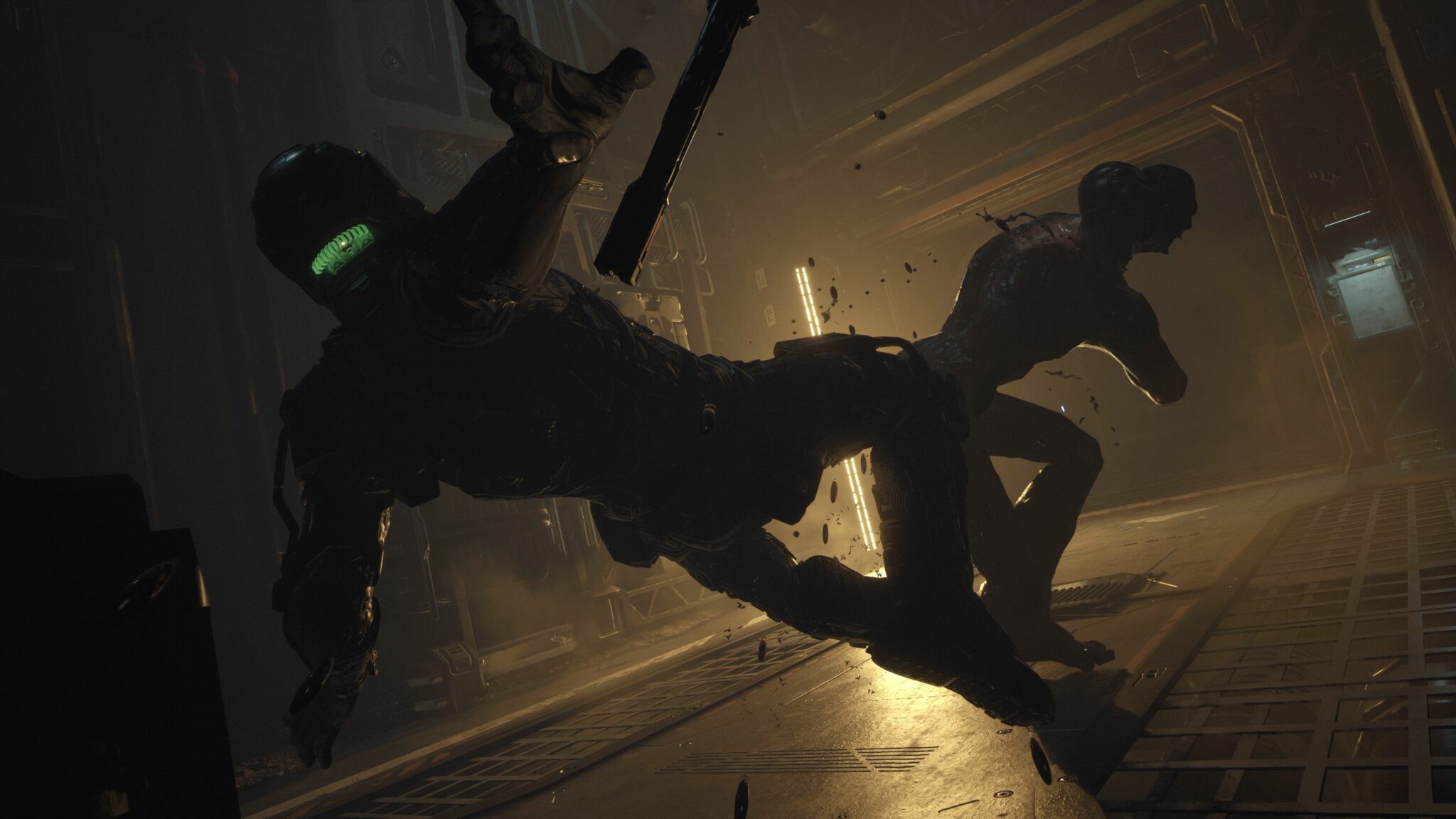
~: So besides open action there is also a stealth system?
Glen Schofield: “No, we don’t have a proper stealth system. With this one opponent I mentioned, you should try to get him from behind, because if you wake him up, you could be in trouble.
These are pretty cool opponents, by the way. You don’t come across them often, but when you see them you think, ‘Woah! That’s something different.’ It’s quite funny because at first you don’t even know that you can “stealth”, and then all of a sudden it works on these guys. But the mechanic only comes into play later in the game. Still, I wouldn’t say that it suddenly becomes a stealth game.
“You also said ‘action’, but it is a horror game in the first place. Sure, when it comes to combat, it feels a bit more like action. But it’s all pretty gross too. You cut off arms or heads, but the enemies still keep coming at you“.
We have a ‘chunk system’, which is a gore system that lets the player cut chunks out of bodies. There’s an enemy type that sort of cuts itself in half: You can finish off one half, but then you still have to deal with the other. So there are some pretty bizarre things happening. ”
Tracking Horror
~: What do you think is the secret of truly gripping video game horror, and has it changed since Dead Space?
Glen Schofield: H “e’re really turning the corner on everyone in western horror cinema these days. That’s changed, for example. I don’t necessarily like that, because sometimes you just want a happy ending.
The way we deal with sound has changed as well. James Wan (director of “Malignant”) and some others still make great horror films and always try to play with sound and camera angles as well.
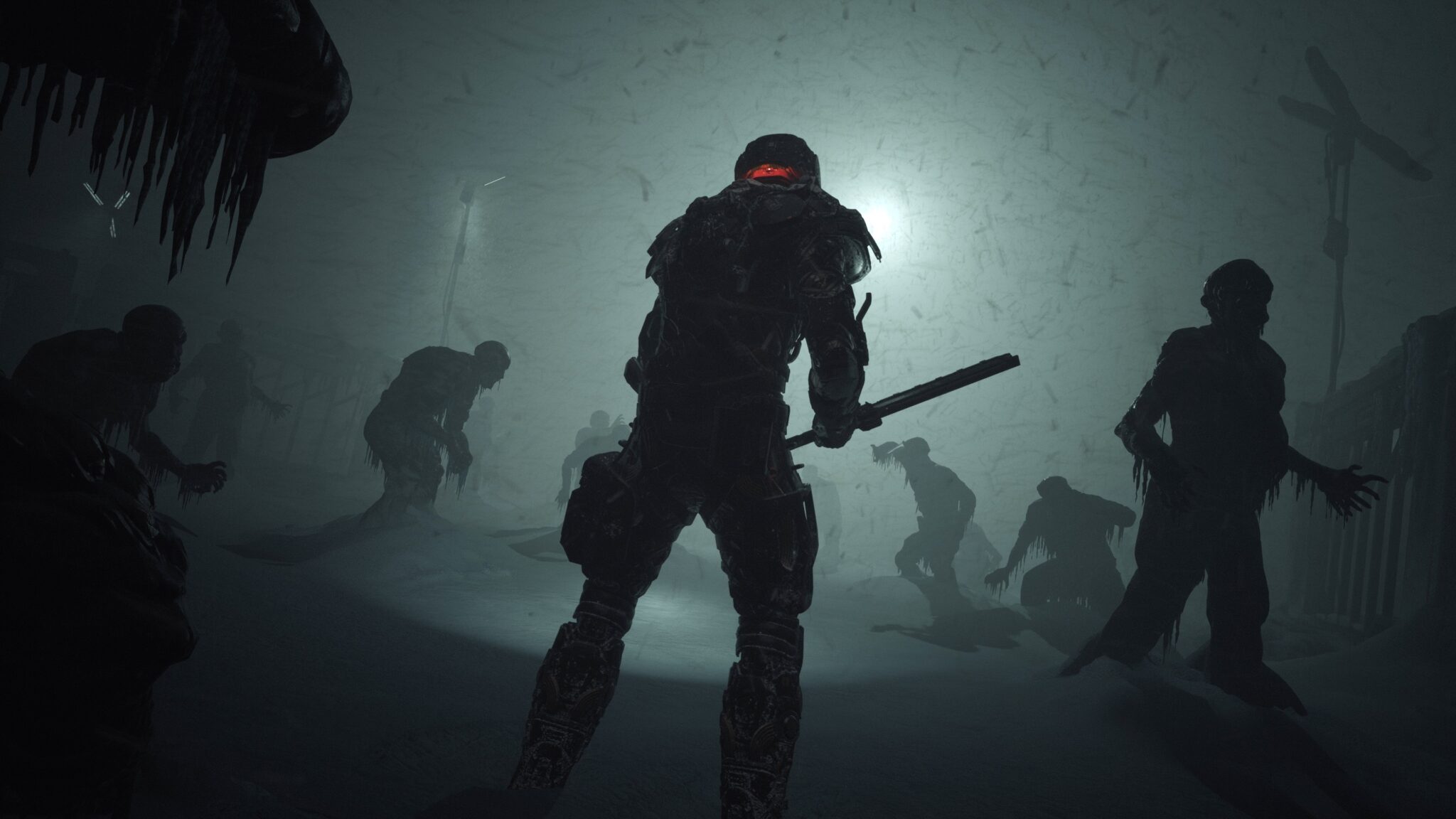
“In The Callisto Protocol we tried to make the moments before an action sequence scary. For example, you only see the enemies at the end of a corridor as silhouettes against the light. Or you see them from a distance and think, ‘What the hell was that?’ and then you have to fight them. Or they jump from the ceiling right into your face, climb out of a ventilation grille behind the player. So we try to make something really scary out of the action scenes as well. And even more peaceful moments in the game are not necessarily peaceful ”
~: Your role on the first Dead Space was Executive Producer, on The Callisto Protocol you are Game Director. What are the differences between these two roles and also working for EA and Krafton?
Glen Schofield: “At EA, the Executive Producer is also the Director. I consider myself the director of Dead Space, and I was the creator of the series. So my role has remained the same. I’m deep in development, even though I run the studio (Striking Distance). I have a group of great people who support me in that, allowing me to be really deeply involved in the development. I take care of the game mechanics … just everything. ”
“When I’m developing a game, I can’t turn it off. I think about it 24 hours a day, send messages to my people at 2am when I get an idea. It’s an affair of the heart. I just love it and I’ve been a creative guy my whole life ”
“I have nothing but good things to say about my time at EA. It’s a very professional company and I learned a lot. You were sort of forced to understand your game from start to finish. You had to understand the financial side, every aspect of development. I learned that there and have applied it throughout my career since.
EA also wanted you to understand marketing, and that’s benefiting me now here at Striking Distance because we want to do our own publishing. The great thing is that marketing and publishing teams are embedded in the development team. I’ve never had a situation like that before, and we work hand in hand every day. But back to EA: great company. There I learned to be a leader and manage a studio. That allowed me to start Sledgehammer Games.”
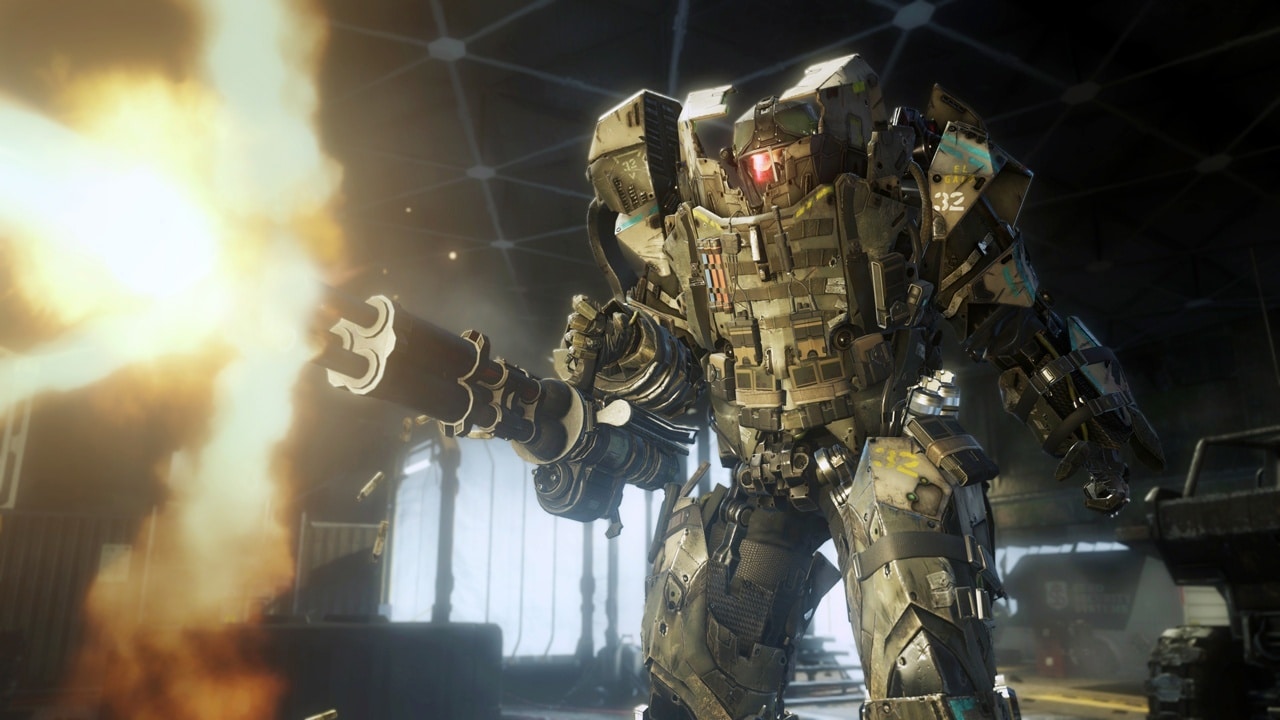
~: Speaking of Sledgehammer Games! What’s more fulfilling for you? Developing horror games or shooters?
Glen Schofield: “I like both. No bullshit at all. Every Call of Duty was different. Modern Warfare 3 was set in the now, and I had complete freedom. In the first level, we blew up New York. I lived there for ten years, so I thought, ‘I know the city well, let’s blow it up.’ And we went to Lagos because I wondered where the worst traffic in the world was. Lagos kept coming up in the search, and I wanted to do an action scene in the traffic jam. So I was able to put my ideas into practice.
Then it was on to Advanced Warfare. It was like we were creating a whole new series. New game mechanics that we came up with ourselves. CoD: WW2 was something completely different. I had to learn history. For three years. I read about the world war, travelled to locations, tried to understand the war, thought about what part of the war we wanted to depict in the game in the first place.
Each of these games was intellectually different, which I appreciated, and now with Callisto Protocol all boundaries are broken. It springs completely from our imagination. Everyone on the team contributes ideas. I get a kick out of discovering other people’s ideas and saying ‘Dude, that’s a great idea! Let’s put that in the game!'”
“This teamwork is a great thing for everyone involved. I love making video games. Each one is a new challenge, and I love all my games so far ”
~: Okay, one last thing. You worked on Barbie: Game Girl. Do you remember that?
Glen Schofield: Oh, yeah! At the time, in the creative department at Absolute Entertainment, they thought it would be fun to give the new guy Barbie: Game Girl. But I was just happy to be working on a video game. I was so excited. My first video game! So I worked hard on Barbie, and it ended up selling better than anything the publisher put out that year.
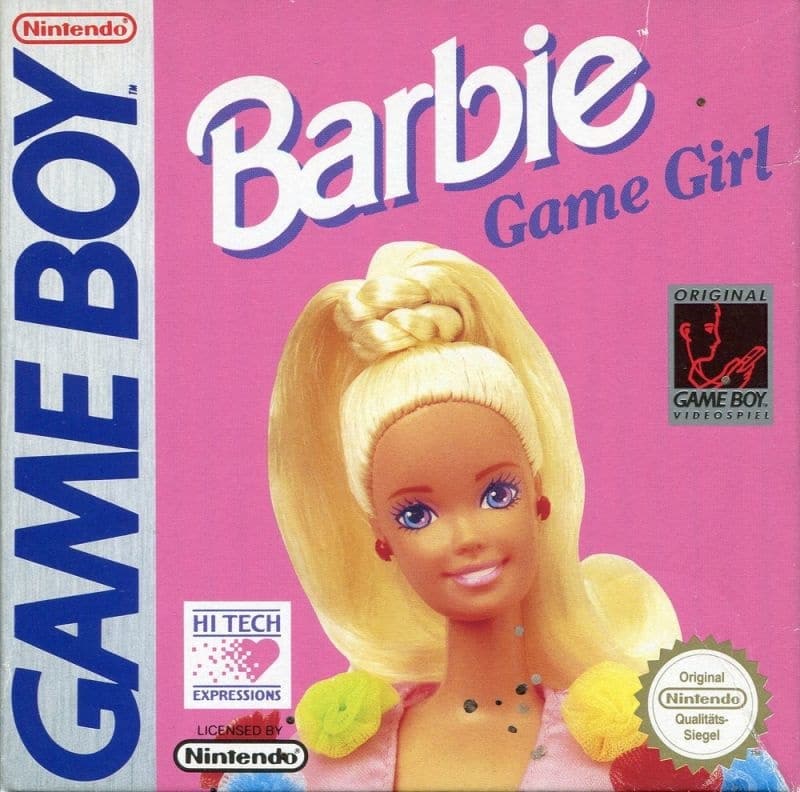
So I was promoted to art director and was suddenly the superior of the one who had given me the Barbie gig as a joke. Now I could put him completely at will on any game that was in development. So it paid off for me.
And believe it or not, Gary Kitchen, who founded Absolute Entertainment and got me this job back then, came into the studio here last week. I owe him a lot and we’re still in touch. Barbie: Game Girl was my starting point in the games business, and I’m kind of proud of it, but don’t talk about it often.” (laughs)

